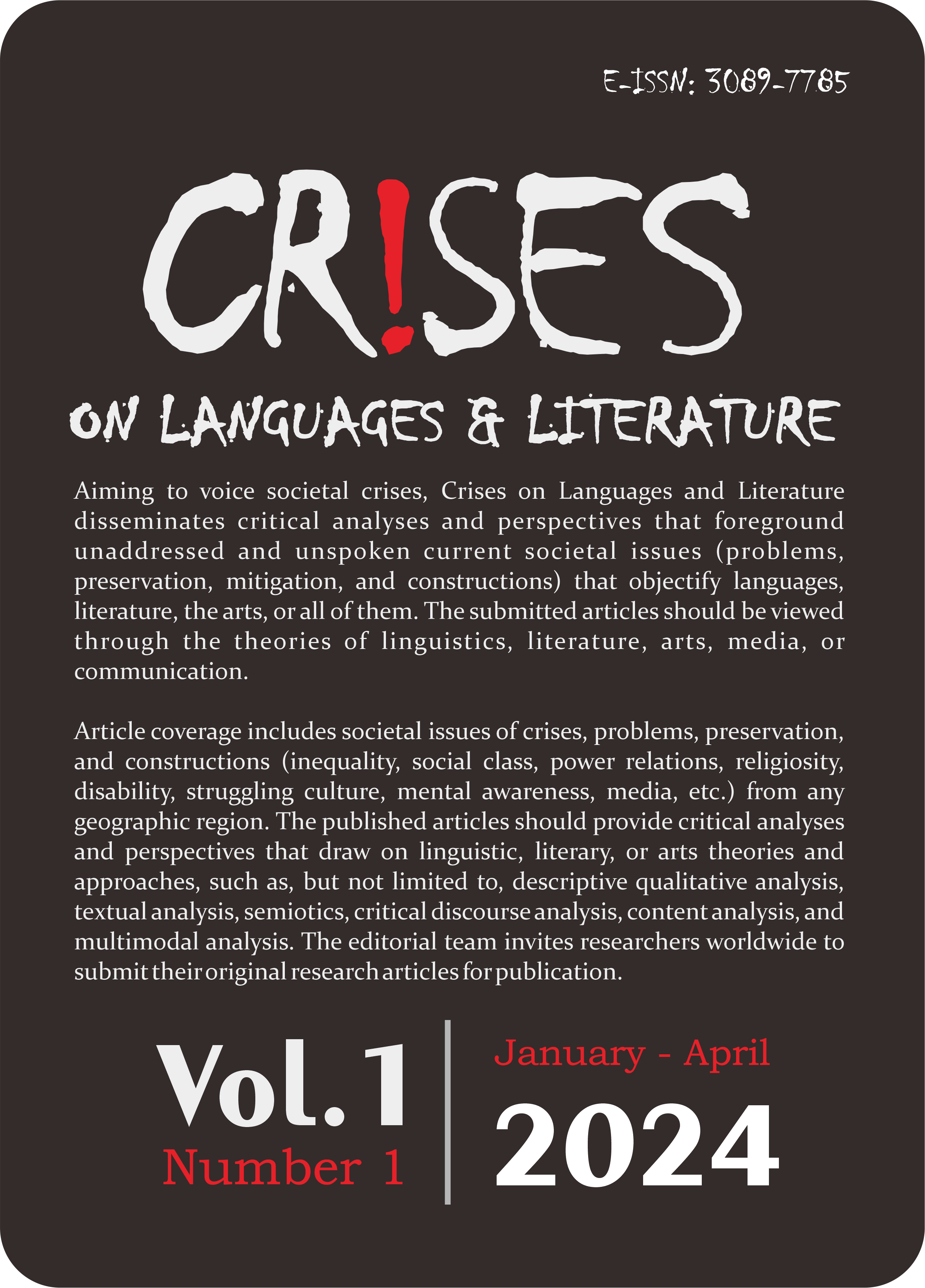Published 2024-04-30
Keywords
- transitive verbs,
- intransitive verbs,
- short stories,
- “al-athfal wa al-qiro’ah”
How to Cite
Copyright (c) 2024 Alya Malida

This work is licensed under a Creative Commons Attribution 4.0 International License.
Abstract
In terms of syntax, verbs can be distributed together with other grammatical units so that a verb distribution is formed that can become the core element of a phrase. There are several subcategories for verbs. Predicate verbs in Indonesian can be divided into two types, namely intransitive verbs and transitive verbs. This study aims to determine whether these verbs are used by the rules of Arabic grammar (syntax). This research method uses a qualitative descriptive analysis method. The data collection technique in this study is by reading and recording. The data source is in the short story "Al-Athfal wa al-qiroah" in the book al'arabiyah baina yadaik. This study uses a repeated reading method in a short story, "Al-Athfal wa al-qiroah," in Al'Arabiyah Baina Yadaik. After data collection, the next step is to identify the type of verb based on the need for the object. The main categories are transitive and intransitive verbs, each with specific criteria. Analysis is carried out on the verbs; the results are recorded and discussed. Next, conclusions are drawn after analyzing the possibility of syntactic errors based on the transitive or intransitive nature of the verbs in the data. The results of the study found 15 transitive and intransitive verb data. Of these, 9 are transitive verb data, and 6 are intransitive verb data. The study results show no errors in language structure, especially related to transitive and intransitive verbs, and indicate that the story's author has good syntactic skills in Arabic.
References
- Al-Fauzan, Abdurrahman bin Ibrahim, Mukhtar Ath-Thohir Husein dan Muhammad Abdul Kholiq Muhammad Fadli. Silsilah Ta’līm Al-Lughah Al-‘Arābiyah li al-Ghairi Nāthiqīna Biha; Al-‘Arābiyah Baina Yadaik, Kitab al-Thālib-1. Riyadh: al-Mamlakah Al-‘Arābiyahal-Su’udiyah, 2007.
- Alkhatib, Abdul Athif bin Muhammad. 2016. Ensiklopedia Komplit Menguasai Shorof Tashrif. Yogyakarta: Mitra Pustaka.
- Al-Maliki, Abu Muhammad Badruddin Hasan bin Qasim. 2008. Tawḍīḥ al-Maqāṣid wa al-Masālik bi Syarḥ Alfiyyah Ibn Mālik. Cairo: Dār al-Fikr al-‘Arabī.
- Dahdah, Antoni. 1981. Mu'jam Qawā'id al-Lugah al-'Arabiyyah fī al-Jadāwil wa al-Lauwḥāt. Damaskus: Maktabah al-'Aṣriyyah.
- Fakhrurrozy, M. Imam. 2018. Nahwu dan Shorof Perspektif Pembelajar Bahasa Kedua. Prosiding Seminar Nasional Bahasa Arab Mahasiswa II Tahun 2018.
- Fromkin, V. dan R. Rodman, An Introduction to Language. Orlando: Harcourt Brace College Publishers, 1998. Cet. VI.
- Hasyimi (al-), Ahmad, Al-Qawâ‗id Al-Asâsiyyah lil Lughatil Arabiyyah. Kairo: Maktabah Al-Azhar, 1354 H.
- Hidayatullah, Moch Syarif. 2017. Cakrawala Linguistik Arab. Jakarta: Grasindo.
- Ibnu Aqil, Syarah Alfiyyah. Beirut: Dar el-Fikr, tt.
- Ridlwan, M. Munawwir. 2016. Nahwu Idola: Pengantar Memahami Nadzom Alfiyyah Ibnu Malik. Sumenang: Lirboyo Press.
- Satyawati, Made Sri., I Nyoman Kardana., Dewa Ayu Kadek Claria. (2021). Morpho-Semantic of Predicate in Indonesia. Journal of Language Teaching and Research, 12(6), 1082—1088. https://doi.org/10.17507/jltr.1204.2 4
- Verhaar, J.W.M. 1981. Pengantar Linguistik. Yogyakarta: Gadjah Mada University Press.

